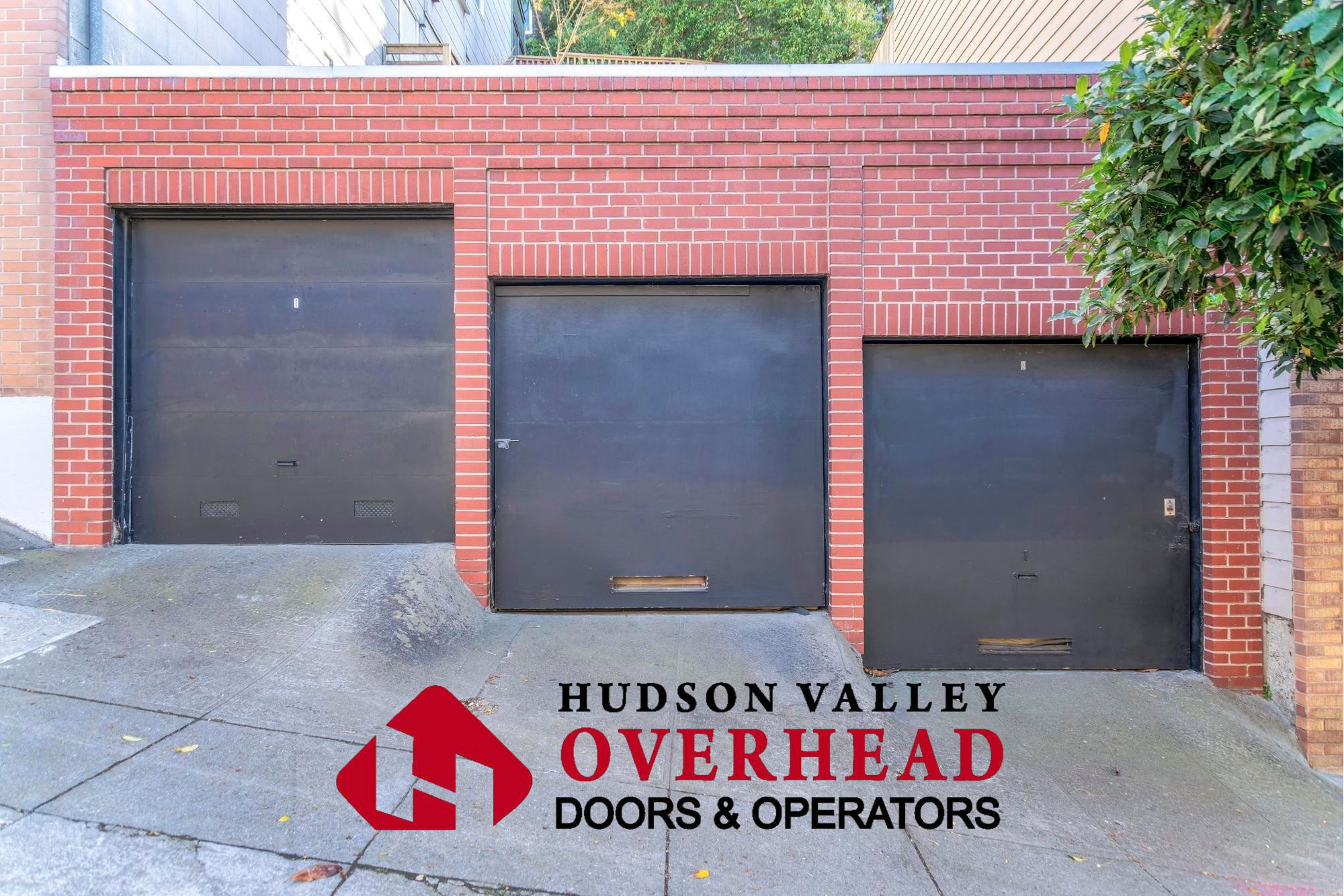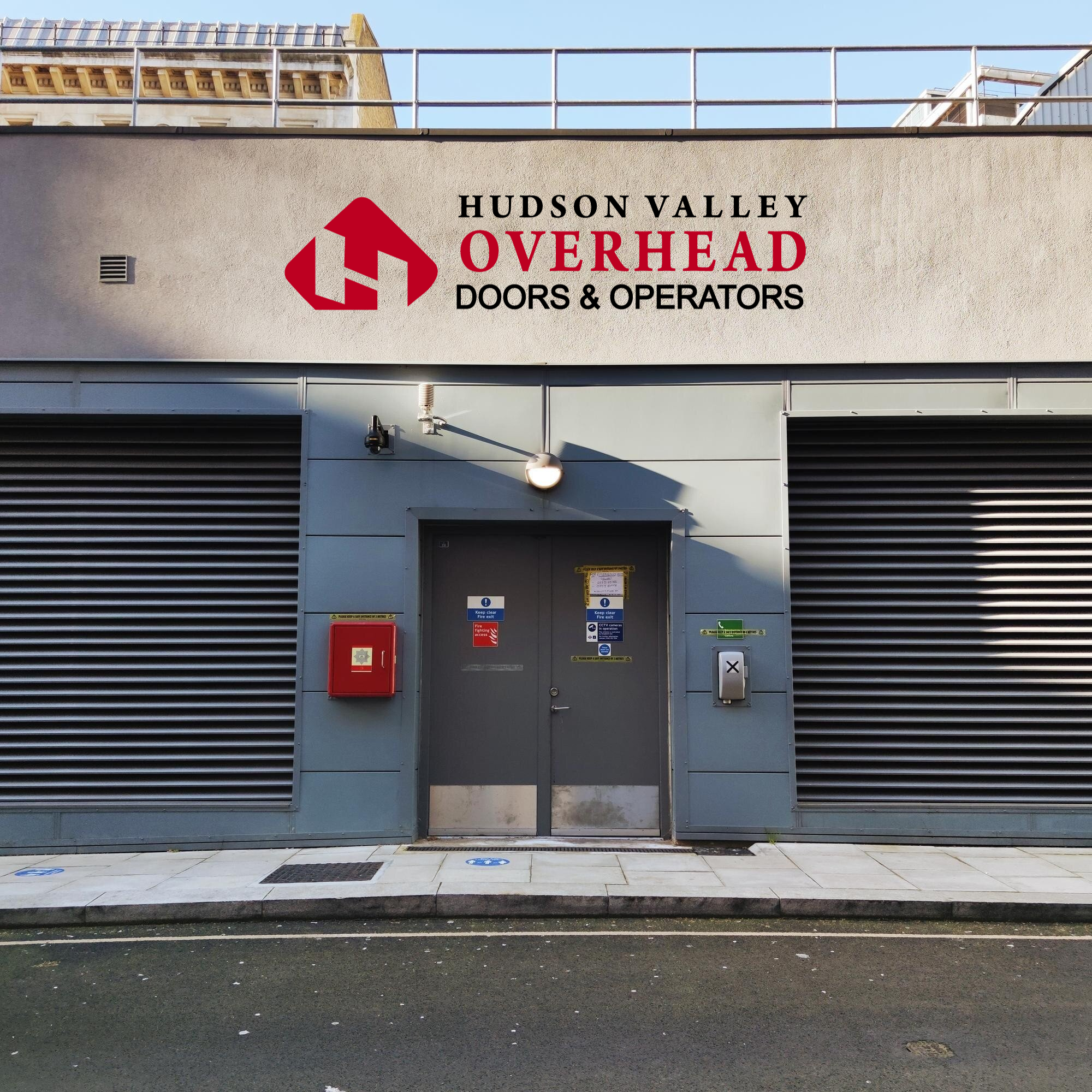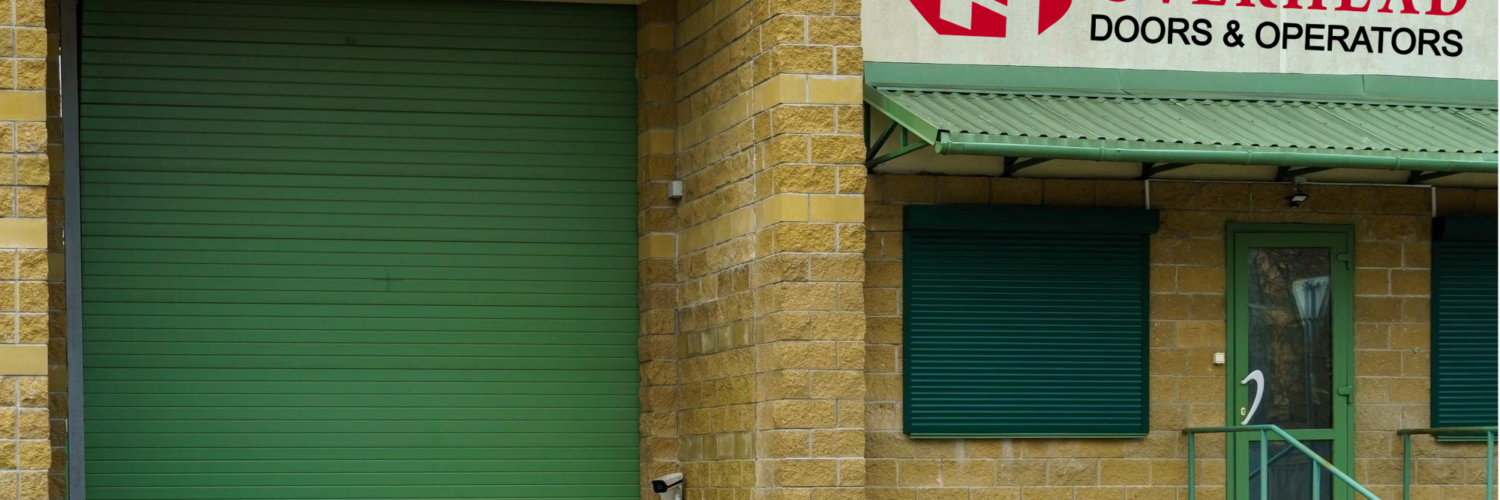The Role of Fire-Rated Garage Doors in Commercial Building Safety
In commercial and industrial environments, maintaining property safety goes beyond securing entries and exits. Fire-rated garage doors serve as critical components in containing and controlling fire hazards, especially in structures where large equipment, flammable materials, or high-traffic storage zones are involved. These doors are engineered to withstand extreme heat for specified timeframes, enabling occupants to evacuate safely while minimizing structural damage.
The strategic placement of fire-rated garage doors not only supports passive fire protection efforts but also ensures seamless integration with automated alarm and sprinkler systems. Whether used in manufacturing facilities, logistics centers, or multi-tenant retail complexes, these doors help isolate fire outbreaks and prevent them from spreading to adjacent areas. Their ability to compartmentalize spaces effectively makes them indispensable in maintaining business continuity during emergencies.
Fire-rated roll-up gates and sectional garage doors are regulated under stringent safety and building code requirements. These regulations outline performance metrics such as hourly fire resistance ratings, impact integrity, and closure mechanisms. Modern models are often equipped with heat sensors or fusible links that trigger automatic deployment in response to rising temperatures and essential features for unmanned or after-hours operations.
Across Dutchess County, NY, compliance with fire safety protocols remains a top priority for property owners, contractors, and developers managing retail, warehouse, or mixed-use buildings. Local code enforcement officers frequently inspect the installation and maintenance of fire-rated garage doors, emphasizing the importance of using certified systems tested in accordance with UL or NFPA standards.
Ensuring that installed systems meet the standards set by national and local authorities is both a legal requirement and an operational necessity. Failure to comply can result in citations, insurance complications, or greater liability in the event of a fire. By choosing properly rated and professionally installed systems, stakeholders in Dutchess County, NY protect not only their investments but also the safety of building occupants and first responders.
Construction and Certification Standards
Core Materials and Fire Resistance Ratings
Fire-rated garage doors are constructed from durable, non-combustible materials such as galvanized steel and reinforced aluminum, both selected for their superior heat resistance and structural integrity. These doors often feature multi-layered construction that includes internal insulation made from mineral core, ceramic fiber, or other advanced fire-resistant compounds. These internal layers are engineered to delay thermal transfer, helping to prevent flame penetration and maintaining the door’s integrity under prolonged exposure to extreme heat.
By integrating materials that are specifically tested for combustibility and thermal endurance, fire-rated garage doors provide critical protection in environments where asset preservation and human safety are paramount. Some configurations also incorporate intumescent seals or gaskets that expand under heat, creating a smoke- and flame-tight barrier between compartments.
Common fire resistance ratings range from 20 minutes to up to four hours, depending on the building code requirements and the specific function of the space being protected. For example, a warehouse storing flammable liquids might require a 90-minute or 180-minute rating, while a corridor between two retail units may only necessitate a 45-minute door. The certification process is carried out by independent testing laboratories like UL (Underwriters Laboratories) or Intertek, using rigorous standardized testing protocols under ASTM E119 or NFPA 252 guidelines.
The National Fire Protection Association outlines specific performance and installation criteria in NFPA 80, which governs the design, labeling, installation, inspection, and maintenance of fire doors and other opening protectives. These regulations ensure that all installed components perform as intended during real-life fire emergencies and continue functioning over time through regular maintenance and re-certification.

Compliance with New York Building Codes
All fire-rated systems installed in Dutchess County must adhere to the mandates of the New York State Building and Residential Code. These regulatory frameworks are designed to protect life and property while adapting national safety benchmarks to the unique needs of New York’s commercial, industrial, and mixed-use developments. They incorporate guidelines from organizations like the International Code Council (ICC), NFPA, and FEMA, with adaptations tailored to urban density, architectural heritage, and available emergency response resources.
For building owners and construction firms, understanding and complying with these regulations is not a critical step in securing project approvals, minimizing liability, and ensuring long-term code compliance. Installation teams and project planners often coordinate closely with local municipal inspectors and fire marshals to ensure that roll-up gates and garage doors are properly tested, labeled, and commissioned.
In Dutchess County, NY, these installations must meet detailed provisions under Article 10 (Fire Protection Systems) and Article 7 (Fire-Resistance-Rated Construction) of the New York State Building Code. This includes specific documentation of door ratings, approved anchoring systems, operational testing, and scheduled inspections. Failure to meet these provisions can result in occupancy delays, costly retrofit mandates, or finesmaking it essential to work with certified professionals who specialize in fire-rated garage doors and related safety infrastructure.
Applications Across Commercial Sectors
Warehouses and Distribution Facilities
In warehouse settings, fire-rated garage doors are often deployed to separate bulk storage from operational zones, including sorting, packaging, or dispatch areas. This strategic separation is especially vital in facilities handling large inventories of combustible materials such as cardboard, plastics, aerosols, or chemical products. By containing potential fire outbreaks within isolated compartments, these systems play a key role in operational continuity and emergency response planning.
The implementation of fire-rated garage doors significantly enhances warehouse garage door safety, particularly in spaces where forklift traffic or conveyor systems frequently move goods between sections. These high-traffic routes are at increased risk for accidental sparks, mechanical overheating, or battery firesmaking compartmentalized protection essential.
Compliance with commercial garage door maintenance protocols ensures these fire-rated systems operate as designed. This includes periodic drop tests, visual inspections, and component replacements aligned with NFPA 80 standards. Automated models with integrated sensors, backup power systems, and programmable delay closures can further strengthen safety outcomes by enabling responsive behavior during fire detection.
For businesses in Spencertown and neighboring regions of Dutchess County, NY, incorporating these protective barriers does more than meet code; it actively supports insurance eligibility, risk management strategies, and long-term asset protection. Logistics and fulfillment centers managing loading docks, staging areas, or high-bay racking systems may opt for advanced models featuring smoke seals, heat-sensing triggers, and auto-closing tracks to guard against fire migration in open-bay designs.
Related: Spencertown garage doors
Retail Centers and Mixed-Use Properties
Retail and mixed-use developments, especially those located in bustling downtown corridors or suburban commercial strips, require an adaptable approach to fire protection. These buildings typically combine storefronts, storage spaces, and sometimes residential units introducing a complex mix of occupancy types and safety concerns. In this context, fire-rated roll-up gates serve a dual function: providing quick access while ensuring compartmentalized fire resistance.
Common applications include securing the passage between customer-facing retail areas and back-of-house zones, such as inventory rooms or receiving docks. In multilevel buildings, these fire-rated solutions can also act as vertical fire breaks when installed on mezzanines or service corridors. Their ability to automatically close during emergencies makes them a valuable asset in preserving egress routes and containing flames to a single floor or section.
Incorporating these systems aligns with the best practices outlined in the International Building Code, which requires fire-rated barriers in structures exceeding certain occupancy loads or with high combustible content. Developers and facility managers must account for various factors such as local foot traffic, tenant density, inventory volatility, and shared access points. These considerations help determine appropriate door ratings, materials, and control features that fit within approved architectural plans.
When designed and installed correctly, fire-rated roll-up gates offer seamless integration into building aesthetics and daily operations while delivering reliable protection in emergency scenarios. These strategies form a core component of Dutchess County property security solutions, particularly for real estate portfolios aiming to balance customer experience with regulatory compliance and insurance requirements.
Inspection, Maintenance, and Safety Protocols
Required Testing Intervals
Both New York State regulations and NFPA 80 set forth clear requirements for the ongoing performance evaluation of fire-rated garage doors. Under these standards, all systems must undergo annual inspections and operational tests, with detailed documentation maintained for code compliance and liability protection. These procedures are not only legal mandates but essential components of a proactive fire safety strategy in commercial and industrial properties.
Annual evaluations typically include a multi-step process:
- Visual checks: for physical integrity, corrosion, warping, or mechanical wear on tracks, guides, and closure components involve a meticulous inspection of all moving and structural elements of the fire-rated door system. This includes assessing door panels for dents or cracks, checking for rust or oxidation on metal surfaces, ensuring alignment of track assemblies, and identifying any signs of fatigue or degradation in hinges, rollers, or spring mechanisms. These evaluations are crucial to confirming that the door can close securely and operate reliably under both everyday use and emergency conditions.
- Functional testing of all automatic closing mechanisms to confirm proper deployment under fire simulation conditions involves activating the door’s release systems either manually or through a controlled heat-triggered scenario to verify that the door closes fully, smoothly, and within the designated timeframe. This process ensures that components such as fusible links, motor controls, gravity-fed closures, and braking systems respond accurately when exposed to conditions that mimic a real fire event. Proper closure during these tests confirms that the door will effectively seal off the designated compartment, preventing flame and smoke migration as intended by code.
- Verification of fusible links and release devices, ensuring they activate at designated heat thresholds and are free of obstruction, entails inspecting these critical safety components for proper placement, physical condition, and operational readiness. Fusible links typically designed to melt at predetermined temperatures (e.g., 165°F or 212°F)must be tested to confirm they are not painted over, corroded, or impaired by dust or mechanical interference. Release devices must function without delay when triggered, allowing the fire-rated garage door to close automatically in response to heat. Any obstructions, tension imbalances, or disconnections identified during inspection can compromise system performance and must be corrected immediately.
- Confirmation of signage, labeling, and compliance tags,as required under UL or Intertek certification criteria, involves verifying that all required identification markers are present, legible, and securely affixed to the fire-rated garage door assembly. These labels provide essential information such as fire-resistance rating, manufacturer details, model number, and testing standard compliance (e.g., UL 10B/10C or NFPA 252). Inspectors must ensure that no labels are missing, obscured, or damaged, as proper documentation is necessary for passing code inspections and validating system certification. The presence of these compliance tags confirms that the door was tested under approved laboratory conditions and meets all safety and performance benchmarks.
These inspections should be conducted by trained professionals with experience in code-compliant installations and familiarity with current testing procedures. Any deficiencies discovered such as delayed closures, obstructed sensors, or unlabeled doors must be corrected immediately to restore code conformity and operational readiness.
As outlined by the Consumer Product Safety Commission, verifying the operational safety of all automated systems, including reverse mechanisms, is critical to minimizing injury risks during emergencies. Garage doors that fail to reverse upon obstruction or that close with excessive force pose hazards not just during fires, but during daily use as well, particularly in mixed-use or high-traffic settings.
Regular commercial garage door maintenance is necessary to meet these evolving safety standards. Maintenance intervals should be tracked in facility logs and accompanied by service reports that detail repairs, part replacements, and system upgrades. In addition to satisfying legal requirements, this approach extends the service life of fire-rated garage doors and ensures they function reliably in the event of an emergency.
Facilities in Dutchess County, NY and surrounding regions are encouraged to coordinate with local code enforcement officers and certified contractors to stay ahead of compliance updates and maintain safety across all door systems. Proactive management of inspection schedules can reduce risk exposure, prevent fines, and enhance emergency preparedness throughout the building lifecycle.
Emergency Response and Manual Overrides
In facilities where automated systems are used, commercial garage doors must include manual override capabilities that allow for secure and immediate operation without reliance on electrical power. These manual systems are critical in emergency scenarios where fires may disable control panels, disrupt power supply, or compromise networked fire alarm systems. First responders, facility managers, and safety personnel rely on these overrides to access or isolate critical areas quickly and safely.
Fire-rated garage doors equipped with manual overrides ensure that access and egress routes remain functional even during full-system outages. In high-stakes environments such as warehouses storing hazardous goods, hospitals with adjacent loading zones, or mixed-use buildings with shared underground parking, manual operation can be the difference between containment and catastrophe.
Override mechanisms typically include:
- Chain hoist systems with brake release controls
- Spring-tensioned lift bars
- Accessible keyed disconnect switches
- Manual crank handles stored in clearly marked enclosures
To ensure functionality under stress, these features must be tested regularly as part of scheduled inspections and emergency preparedness drills. Building personnel should be trained on override procedures, including locating access points, operating backup mechanisms, and coordinating with emergency services during active incidents.
Periodic drills and structured training programs not only enhance response times but also reduce liability exposure for property owners. Documentation of these activities along with clear signage and updated training logs demonstrates a facility’s proactive commitment to safety and compliance.
In jurisdictions like Dutchess County, NY, where diverse commercial property types coexist, the presence of reliable manual overrides on commercial garage doors is increasingly viewed as a best practice in building design. Whether mandated by local code or implemented voluntarily as part of a broader risk mitigation strategy, these systems provide a vital layer of resilience in the face of unexpected emergencies.
Integration with Building Systems
Fire-rated garage doors often integrate with other building life safety systems such as fire alarms, sprinklers, and emergency lighting. When triggered, interconnected signals automatically initiate door closures, helping to contain heat and smoke within defined compartments. This synchronization is particularly important in complex structures with multiple entry points or layered occupancy.
Facility managers should work with code consultants and fire safety engineers during both new installations and retrofit projects to ensure interoperability among safety systems. Hudson Valley Overhead Doors & Operators has been recognized for their ability to execute system-aligned installations consistent with industry best practices, particularly in roll-up gate installation and safety reverse system testing.
Advancements in Fire-Rated Door Technology
Automated Diagnostics and Smart Monitoring
Recent advancements in fire safety technology have transformed how fire-rated garage doors are managed and maintained. Many systems now incorporate IoT-enabled sensors and smart diagnostic tools that allow for real-time monitoring of door performance and integrity. These innovations are reshaping facility management by introducing predictive maintenance models and data-driven compliance tracking.
With automated diagnostics, sensors continuously evaluate operational cycles, identify wear patterns, detect thermal anomalies, and flag mechanical inconsistencies before they escalate into system failures. This level of oversight enables property managers to schedule repairs proactively, reduce downtime, and avoid costly emergency replacements. Alerts can be configured to notify staff or service providers immediately upon detecting abnormal activity, streamlining both on-site response and long-term planning.
Smart systems also simplify compliance documentation by logging inspection data, test cycles, override activations, and maintenance history all of which are essential for meeting the reporting requirements under NFPA 80, OSHA, and New York State regulations. These digital records can be accessed remotely, integrated with facility management software, and used to prepare for audits or insurance reviews.
In commercial facilities across Dutchess County, NY, smart-enabled fire-rated garage doors are increasingly favored for their ability to enhance safety while reducing the administrative burden of manual tracking and reporting.

Environmental Efficiency and Dual-Use Design
Beyond their fire protection capabilities, many modern roll-up gates for commercial properties are engineered for multi-functional performance. Today’s systems are designed not only to contain fire and smoke but also to provide superior environmental efficiency, a growing concern in energy-conscious and sustainability-focused operations.
By incorporating high-performance insulation and perimeter sealing technologies, these doors contribute to reduced HVAC loads, minimized temperature fluctuations, and overall energy conservation. This dual-purpose capability allows buildings to meet fire safety codes while improving indoor climate control, particularly valuable in settings like cold storage warehouses, pharmaceutical distribution hubs, or retail environments with climate-sensitive inventory.
Some models also include acoustic insulation layers to reduce ambient noise, a feature appreciated in urban mixed-use developments and busy logistics terminals where minimizing disruption is key. These designs help businesses meet evolving environmental standards without compromising the structural integrity or fire rating of their roll-up gates for commercial properties.
Facilities in Dutchess County, NY, and surrounding areas are increasingly investing in these dual-use systems to align with both code requirements and operational sustainability goals. When paired with smart monitoring capabilities, these doors deliver unmatched performance in fire safety, efficiency, and facility optimization making them a cornerstone of modern commercial property infrastructure.
Considerations for Retrofitting Existing Structures
For older commercial buildings across Dutchess County, retrofitting fire-rated systems can present unique challenges. Factors such as doorway dimensions, legacy electrical systems, and non-standard framing materials require tailored engineering solutions. In such cases, professional assessment is necessary to determine:
- Load-bearing compatibility
- Compliance with current fire and egress codes
- Alignment with occupancy classification
- Structural modifications required for new assemblies
Hudson Valley Overhead Doors & Operators has frequently contributed expert insight in retrofitting assessments, especially for facilities undergoing phased modernization or adaptive reuse projects. Services such as garage door realignment or emergency service are essential considerations during these evaluations.
Final Thoughts on Code-Aligned Fire Safety Planning
For developers, contractors, and commercial property stakeholders in the Hudson Valley, fire-rated garage doors represent more than a code requirement; they are a proactive investment in life safety, insurance compliance, and operational continuity. Through careful planning, ongoing commercial garage door maintenance, and proper integration with larger safety frameworks, these doors offer a critical line of defense in any comprehensive property protection strategy.
By staying informed about evolving garage door safety standards and technological enhancements, property owners can ensure that their safety infrastructure remains both compliant and resilient. The expertise of seasoned professionals like those at Hudson Valley Overhead Doors & Operators helps guide these important decisions across every phase of commercial facility development.





